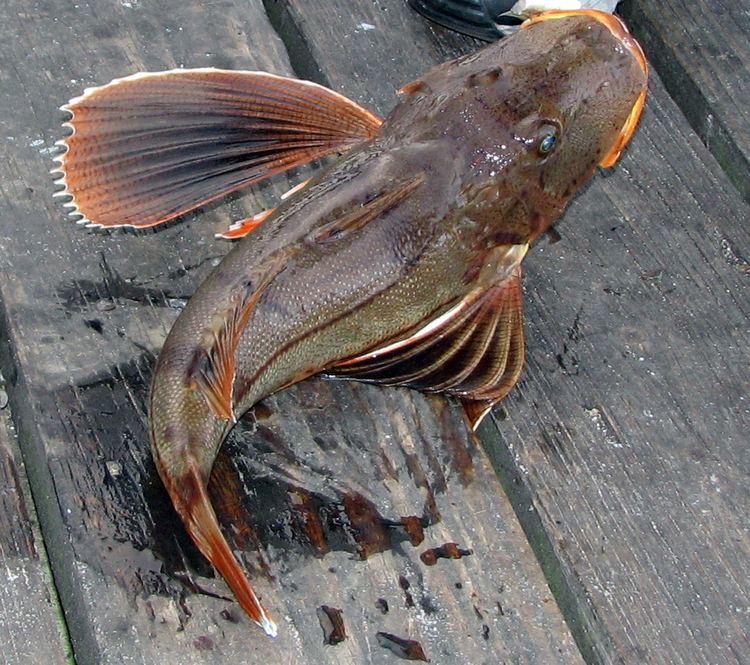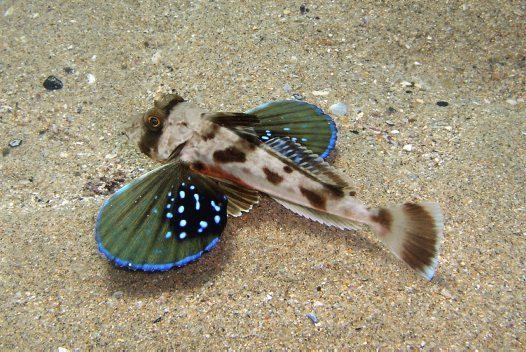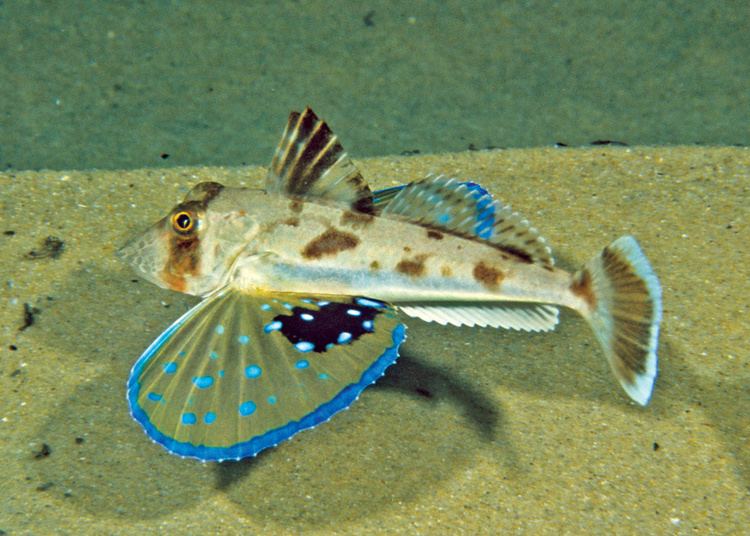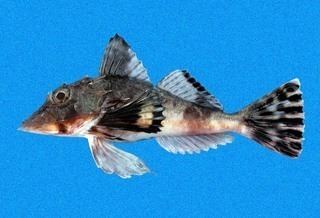Higher classification Scorpaeniformes | Phylum Chordata Scientific name Triglidae Rank Family | |
 | ||
Lower classifications | ||
Sea robin triglidae sp walking on the ocean floor
The Triglidae, commonly known as sea robins or gurnard, are a family of bottom-feeding scorpaeniform fish. They get their name (sea robin) from the orange ventral surface of the species in the Western Atlantic (Prionotus carolinus) and from large pectoral fins, which, when swimming, open and close like a bird's wings in flight. The large surface area of the fins also permits the fish to glide short distances above the water surface, much like a flying fish.
Contents

They are bottom-dwelling fish, living down to 200 m (660 ft), although they can be found in much shallower water. Most species are around 30 to 40 cm (12 to 16 in) in length. They have an unusually solid skull, and many species also possess armored plates on their bodies. Another distinctive feature is the presence of a "drumming muscle" that makes sounds by beating against the swim bladder. When caught, they make a croaking noise similar to a frog, which has given them the onomatopoeic name gurnard.

Sea robins have six spiny "legs", three on each side. These legs are actually flexible spines that were once part of the pectoral fin. During development, the spines separate from the rest of the fin, developing into feeler-like "forelegs". The pectoral fins have been thought to let the fish "walk" on the bottom, but are really used to explore the bottom in search of food. The first three rays of the pectoral fins are membrane-free and used for chemoreception being highly sensitive to amino acids prevalent in marine invertebrates.

As food

Gurnard have firm white flesh that holds together well in cooking, making them well-suited to soups and stews. They were often caught in British waters as a bycatch and discarded, but as other species became less sustainable and more expensive, as of 2014 gurnards were becoming more popular there; the wholesale price was reported to have increased from £0.25 per kg to £4 from 2007 to 2008. Sea robins also are now appearing in fish markets in the U.S. One source says that gurnards are rather bony and lacking in flavour, and usually sold quite cheaply; others praise its flavour and texture.
The fish is used commonly in French bouillabaisse.
Angling
Sea robins can be caught by dropping a variety of baits and lures to the seafloor, where they actively feed. Mackerel is believed to be the most efficient bait for catching sea robins, but bunker and other fish meat can also be used successfully depending on location. Sea robins can also be caught by lure fishing if lured near the substrate. They are often considered to be rough fish, caught when fishing for more desirable fish such as striped bass or flounder. Gurnard are also used as bait, for example by lobster fishermen.
